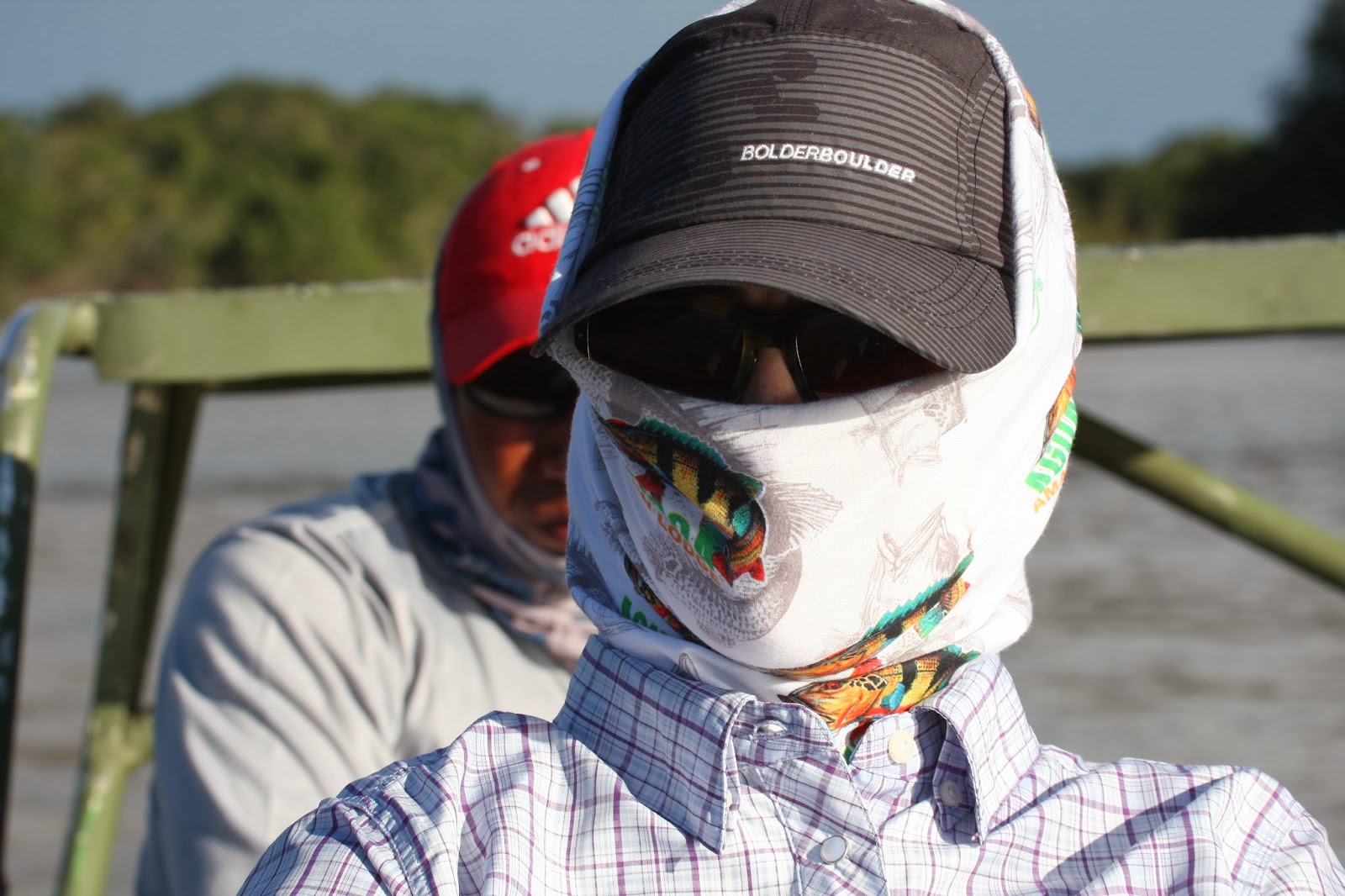1.) We had a great group (many of us were old friends and the "newbies" who joined us for this year's trip fit right in).
2.) We experienced wonderful weather (we only had one rainy morning and we were obviously in a rain forrest!) and...
3.) We had terrific fishing!
The low water levels gave us some great sight fishing opportunities off the many white sand beaches and on the numerous barely submerged pale yellow sand bars. At times, with the guide on the poling platform and with your fly pinched between thumb and forefinger, it seemed as if we were bonefishing.
 |
| Big Arowana at the fish market in Manaus |
 |
| Cindy and Steve Peskoe bring it home after Day 1 |
 |
| Plecostomus catfish |
We caught all three species of peacock bass present in the Agua Boa River: the butterfly (or borboleta), the spotted (or paca) and the temensis (or tucanare). The butterfly peacock is the most numerous peacock bass in the river system and specimens range from 2-6 pounds. We often caught dozens of these strikingly beautiful fish each day. While the borboletas provided great action, we had all come for the prime time players, the spotted and tucanare peacocks. These species of peacock bass get much, much larger. These are the ones you see in all the photos! We caught numerous spotted and tucanare peacock bass up to 18 lbs. with everyone catching at least one peacock over 10 lbs. Luckily, we all came to know their slashing and ferocious strikes, as well as their powerful runs and dogged fights. We not only returned home with great memories, but for many of us, the burn lines in our gloves and stripping guards will serve as subtle reminders of a big peacock's power.
 |
| Spotted to Paca Peacock |
 |
| Red Tail Catfish |
 |
| Anna Riggs with a big tucanare |
We also caught many other species including: piranha (the small fish with the big sharp teeth), arowana (absolutely beautiful and we had many great opportunities on this trip), pacu (the silver dollar fish that often take trout dry flies), triara (also called dog fish), jacunda (with a bright red spot and sharp teeth), matrincha (a great gamefish that often makes big jumps), payara (the vampire fish of the Amazon), bicuda (miniature barracudas) red tail catfish (strong, beautiful fish) and oscars (like those in many aquariums, but much bigger and with bright red eyespots).
 |
| Borboleta peacock |
 |
| Preto gives a plecostomus catfish a birdseye view |
 |
| Fly fishing for spectacled caiman? |
We used big 3-5 inch deceiver/whistler style flies. We had some success with surface poppers, but our best luck was with subsurface flies. Red and white, yellow and white, orange and red (with grizzly hackle tips), chartreuse and white with gold flash, black with silver flash and pink with tan… all these colors worked well. On one rod, we used tropical saltwater floating lines usually rigged with a smaller streamer like a 1 or 2/0 for shallow water opportunities. On a second rod, we rigged a 200-grain sink tip with 30-50 pound bite tippets on 4-7 foot leaders attached to big fish flies. Most anglers used 8 wt. rods but 7-9 wt. would work just fine. The arowana fishing was spectacular usually with small deceivers stripped long and slow. A few 8-12 lb arowana were caught, but the majority were in the 4-8 lb. range.
 |
| Tiger heron |
 |
| Capuchin monkey |
 |
| Caracara |
 |
| Jabiru Storks |
 |
| Red-tail boa |
Many thanks to our terrific group: Cindy and Steve Peskoe, John and Anna Riggs, Bob Mankin, Rick Otto, Brian Haberstock, Tim Lee, Dawn Smith, and Richard (Pops) Bahorich. What a great time!...and to the staff at the Agua Boa Lodge especially including Carlos and Charlie many thanks for all your help. And finally, a special thanks to all the guides: Juarez, Samuel, Bacaba, Imao, Joseph, Preto and Caboca…. you guys were great!!
If interested our dates for next year's trip is January 31-February 7, 2015. If you would like more info on this trip, here is a complete list of previous trip reports.:






























